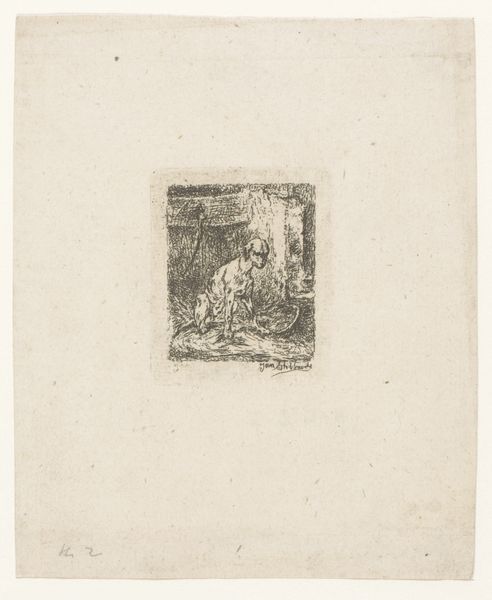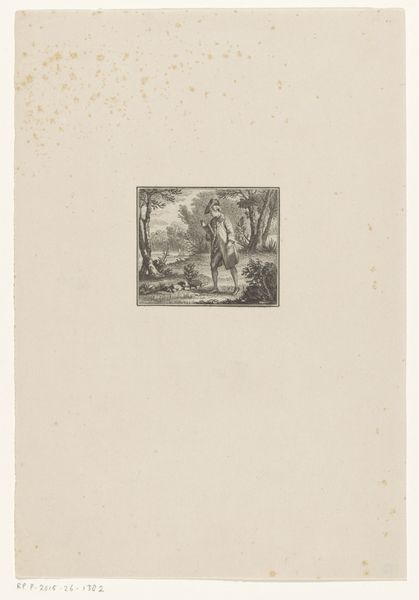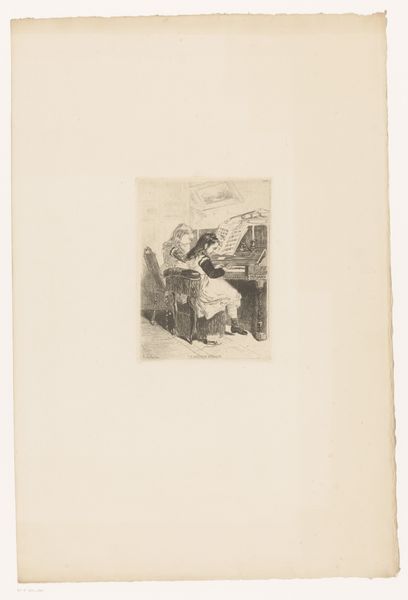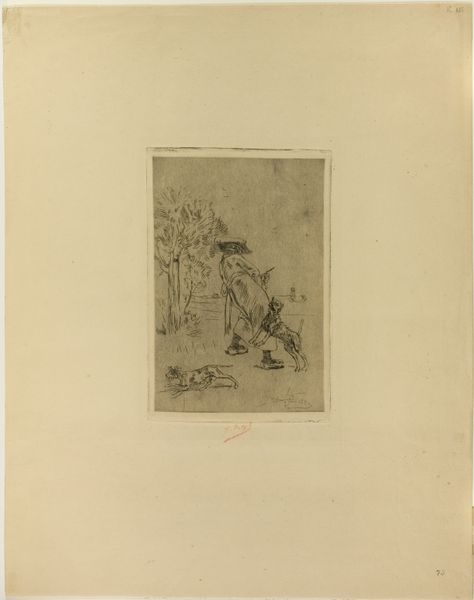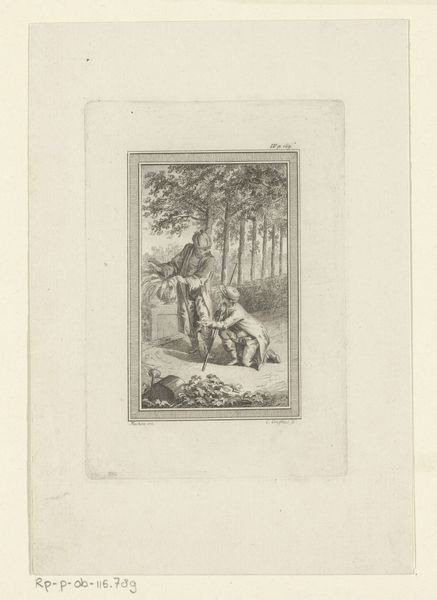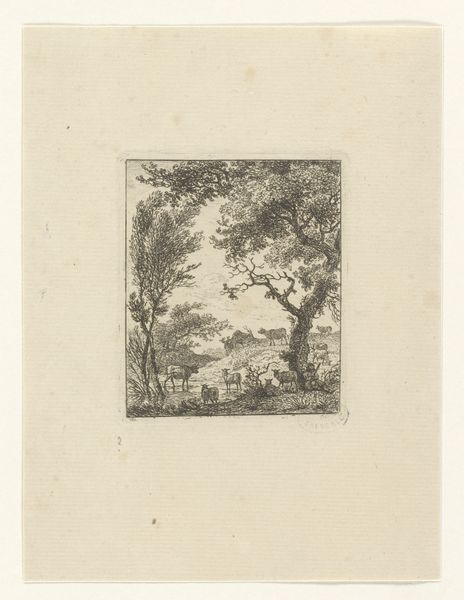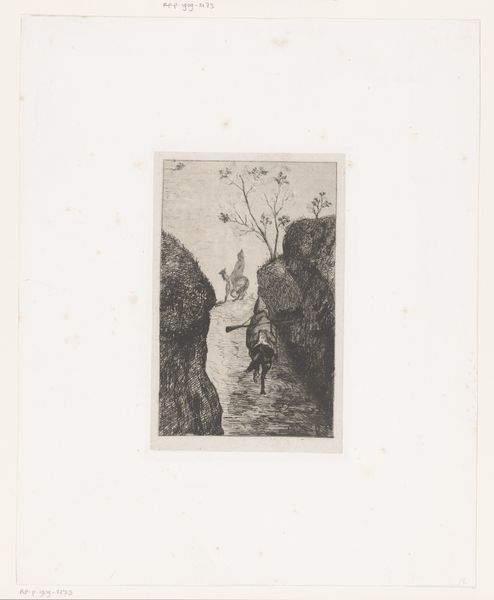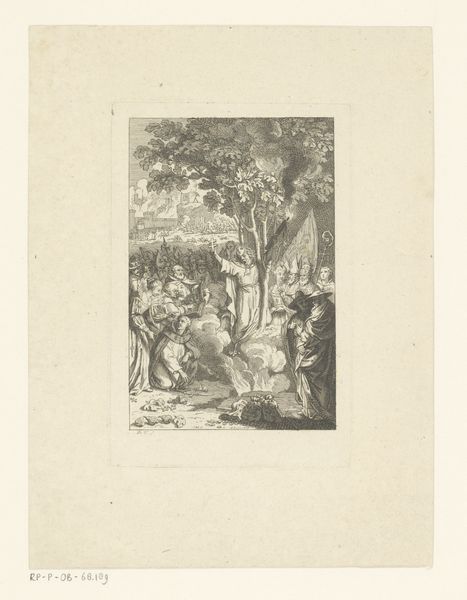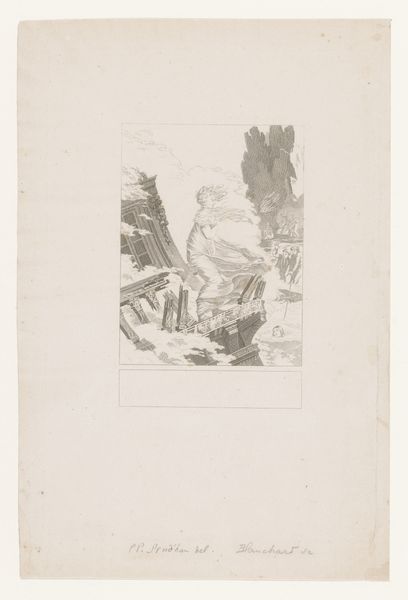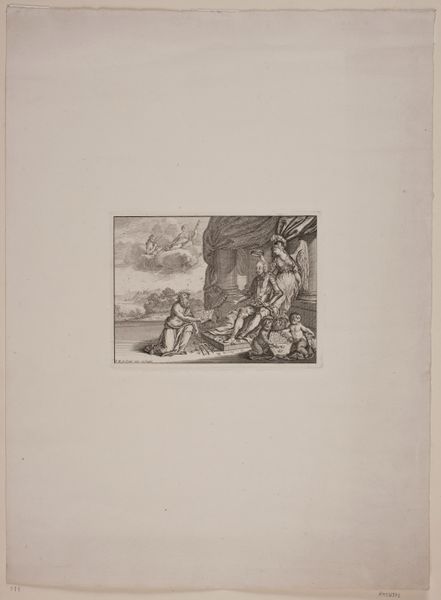
print, engraving
#
portrait
#
baroque
# print
#
old engraving style
#
figuration
#
line
#
genre-painting
#
engraving
Dimensions: height 120 mm, width 78 mm
Copyright: Rijks Museum: Open Domain
Editor: This is “Man Seated on a Stone Bench,” an engraving by Louis Desplaces, dating sometime between 1692 and 1734. It has this almost nonchalant air to it. What social dynamics were at play when art portrayed people like this? Curator: That’s an interesting reading, the nonchalance. Let's consider this through the lens of class and representation. How does the man’s attire and posture reflect the social norms and power structures of the late 17th and early 18th centuries? This was a time of rigid hierarchies; the way one presented oneself was deeply tied to social standing. Editor: So his relaxed pose might actually be a statement, a deliberate display of leisure afforded by his social position? Curator: Precisely. The engraving style, with its delicate lines and attention to detail, also speaks to a specific audience – one that appreciated refinement and elegance. Think about the relationship between artist and patron: how did these relationships shape the stories being told through art? Who had the privilege to be depicted, and how were they choosing to be seen? Editor: It makes me think about contemporary portraiture and who gets to control their own image today. Curator: Exactly! This is what makes these older works so powerful. They act as a mirror reflecting our own societal concerns and biases across time. The medium – engraving – further emphasizes this, as it was a method of reproduction and dissemination, spreading particular images and therefore ideologies. Editor: I hadn't considered how the medium itself could contribute to the message. This has definitely broadened my perspective. Curator: Mine too. It’s a conversation across centuries.
Comments
No comments
Be the first to comment and join the conversation on the ultimate creative platform.
